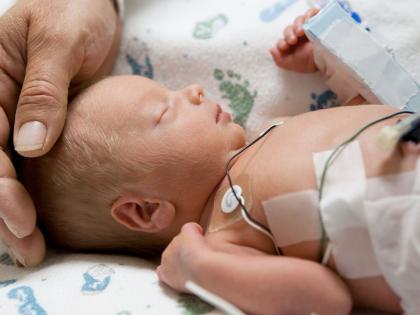Heatwaves Linked to Rise in Premature Births, Study Finds
By Lokmat English Desk | Updated: May 28, 2024 10:44 IST2024-05-28T10:44:10+5:302024-05-28T10:44:40+5:30
A recent study has uncovered a concerning association between elevated rates of premature births and the occurrence of intense ...

Heatwaves Linked to Rise in Premature Births, Study Finds
A recent study has uncovered a concerning association between elevated rates of premature births and the occurrence of intense and prolonged heatwaves. Collaborative research, which included experts from the University of Nevada, investigated the impact of heatwave conditions on the frequency of preterm and early-term deliveries.
A heatwave, characterized by significantly elevated temperatures compared to the typical climate of a region, has been identified as a critical factor in a recent study. Researchers scrutinized a vast dataset encompassing 53 million births across the 50 largest metropolitan areas in the United States over a span of 25 years, from 1993 to 2017. They focused on daily tallies of preterm and early-term births.
A typical pregnancy lasts approximately 40 weeks, with preterm births occurring before 37 weeks and early-term births between 37 and 39 weeks. The study revealed a noteworthy trend: preterm births rose by 2% and early-term births by 1% over the studied period. This increase followed a sequence of four consecutive days during which each day's average temperature ranked within the hottest 2.5% for the respective region.
“Each 1 degree Celsius increase in mean temperature above the threshold was associated with a 1 per cent increase in the rate of both preterm and early-term birth,” the authors wrote in the study published in The Journal of American Medical Association (JAMA) Network Open.
Additionally, the study highlighted disparities in the impact of heatwaves on preterm and early-term births, particularly among specific demographic groups. Analysis revealed that women under the age of 30, with lower levels of education, and belonging to minority groups experienced more pronounced increases in preterm and early-term births under similar heatwave conditions. The research specifically examined pregnancies among mothers with a high school education or less, from racial minority backgrounds, or of Hispanic ethnicity, and who were younger than 30 years old.
The authors noted, "Among this demographic subset, the rate ratio for preterm birth was 1.04, and the rate ratio for early-term birth was 1.03 after four consecutive hot days." They further emphasized that the escalation in preterm and early-term birth rates was more pronounced during prolonged and intense heatwaves, particularly among population segments linked to lower socioeconomic status. The team also highlighted that "modest but robust elevated associations were the strongest in the four days preceding birth and for longer durations of heat and higher temperatures." According to the researchers, this study marks the first instance of compelling population-level evidence demonstrating heightened rates of preterm and early-term births in response to heatwaves.
Open in app